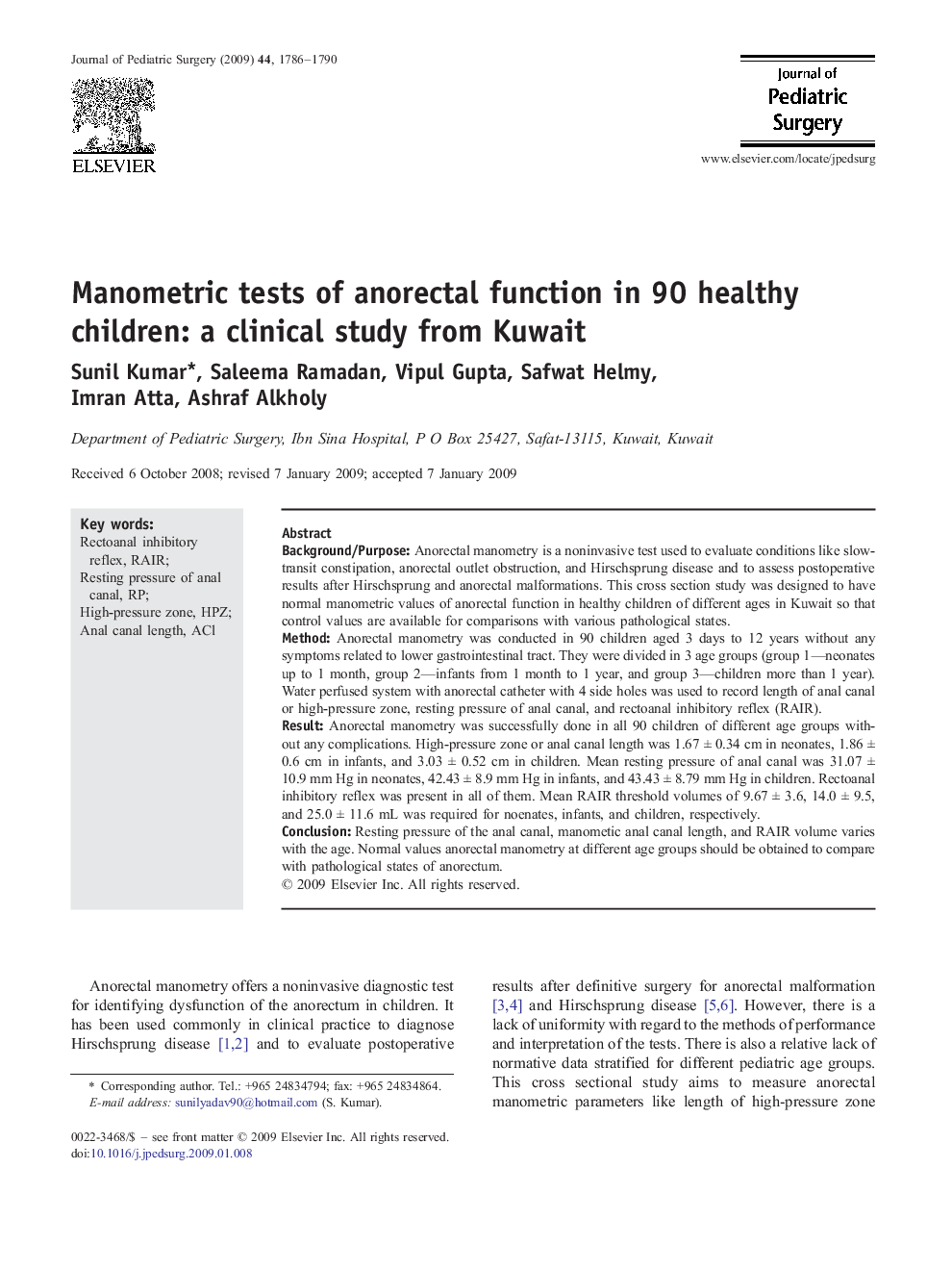| Article ID | Journal | Published Year | Pages | File Type |
|---|---|---|---|---|
| 4159085 | Journal of Pediatric Surgery | 2009 | 5 Pages |
Background/PurposeAnorectal manometry is a noninvasive test used to evaluate conditions like slow-transit constipation, anorectal outlet obstruction, and Hirschsprung disease and to assess postoperative results after Hirschsprung and anorectal malformations. This cross section study was designed to have normal manometric values of anorectal function in healthy children of different ages in Kuwait so that control values are available for comparisons with various pathological states.MethodAnorectal manometry was conducted in 90 children aged 3 days to 12 years without any symptoms related to lower gastrointestinal tract. They were divided in 3 age groups (group 1—neonates up to 1 month, group 2—infants from 1 month to 1 year, and group 3—children more than 1 year). Water perfused system with anorectal catheter with 4 side holes was used to record length of anal canal or high-pressure zone, resting pressure of anal canal, and rectoanal inhibitory reflex (RAIR).ResultAnorectal manometry was successfully done in all 90 children of different age groups without any complications. High-pressure zone or anal canal length was 1.67 ± 0.34 cm in neonates, 1.86 ± 0.6 cm in infants, and 3.03 ± 0.52 cm in children. Mean resting pressure of anal canal was 31.07 ± 10.9 mm Hg in neonates, 42.43 ± 8.9 mm Hg in infants, and 43.43 ± 8.79 mm Hg in children. Rectoanal inhibitory reflex was present in all of them. Mean RAIR threshold volumes of 9.67 ± 3.6, 14.0 ± 9.5, and 25.0 ± 11.6 mL was required for noenates, infants, and children, respectively.ConclusionResting pressure of the anal canal, manometic anal canal length, and RAIR volume varies with the age. Normal values anorectal manometry at different age groups should be obtained to compare with pathological states of anorectum.
